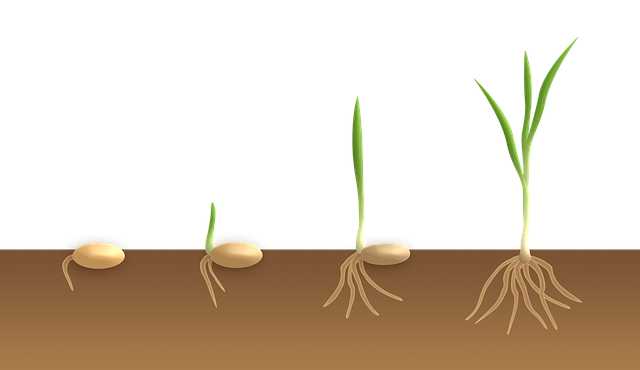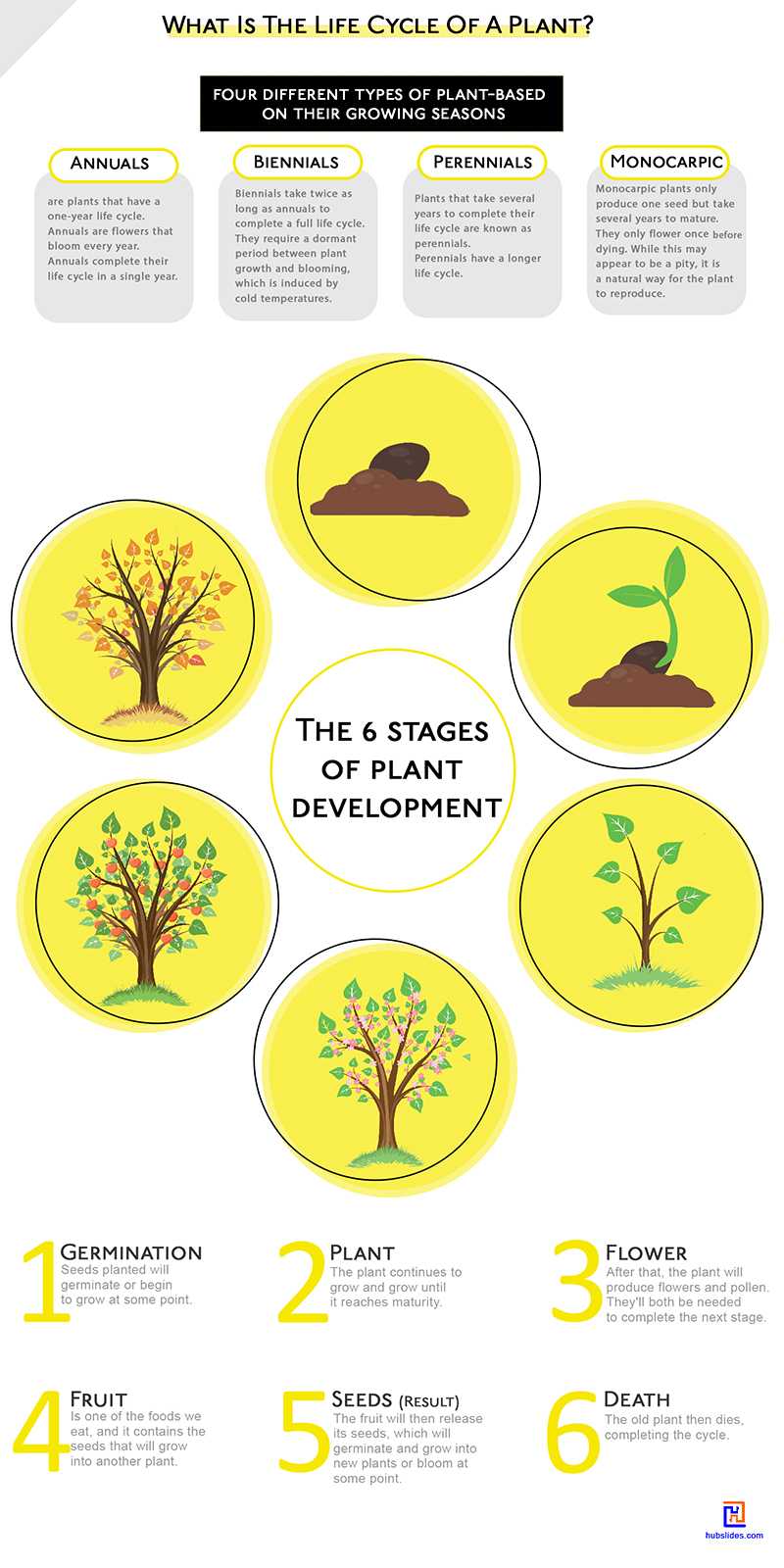What Is The Life Cycle Of A Plant?

Plants, like humans and other animals, have a life cycle. From seed to mature plant, a plant's life cycle describes the various stages of the plant's life.
Not all plants, however, produce seed. Some plants, such as ferns and mosses, produce a variety of cells known as "Spores." Seeds are not produced by this plant.
Lifecycle of a plant
The life cycle of all flowering plants is as follows
Germination
This is the process by which a seed sprouts into a plant. Under the soil, roots grow. Above the soil, the stem, leaves, and flowers appear.
Pollen from one flower is carried to another by insects or blown by the wind. Pollination is the term for this process.

When pollen reaches another flower, it travels to the ovary and fertilizes the egg cells, resulting in the formation of seeds. Fertilization is the term for this process.
Animals or the wind can disperse these seeds. This is referred to as dispersal. Some of the seeds will germinate and germinate into new plants.
The six stages of plant development
Everything starts with a seed, or in the case of seedless plants, spores, which are sown in the ground.
- Germination - Seeds planted will germinate or begin to grow at some point.
- Plant – The plant continues to grow and grow until it reaches maturity.
- Flower – After that, the plant will produce flowers and pollen. They'll both be needed to complete the next stage.
- Fruit is one of the foods we eat, and it contains the seeds that will grow into another plant.
- Seeds (Result) – The fruit will then release its seeds, which will germinate and grow into new plants.
- Death– The old plant then dies, completing the cycle.
Classification of plants based on season
There are four different types of plant-based on their growing seasons. Annuals, biennials, perennials, and monocarpic plants.
Annuals
Annuals are plants that have a one-year life cycle. Annuals are flowers that bloom every year. Annuals complete their life cycle in a single year.
The majority of them are planted in the spring, bloom in the summer, and die in the autumn.
Winter annuals germinate in the late summer and autumn, go dormant over the winter, and bloom the following spring and summer.
These plants are not cold hardy and cannot withstand the cold temperatures of our hardiness zones during the winter
Annuals, with the exception of those that self-seed, will not grow a second year unless they are replanted.
Annuals are frequently divided into three categories: hardy, half-hardy, and tender. This type of life cycle can be found in most herbs and plants belonging to the grass family.
Annual plants include corn, mustard, lettuce, watermelon, and wheat, to name a few.
Biennials
Biennials are plants that have a two-year life cycle.
Biennials take twice as long as annuals to complete a full life cycle. They require a dormant period between plant growth and blooming, which is induced by cold temperatures.
Biennials are typically planted in the spring, become vegetative in the summer, go dormant in the fall, remain dormant through the winter, flower the following summer, set seed, and die the following fall.
A cold frame can be used as a temporary shelter for biennials grown in areas where winter temperatures are colder than the plants' hardiness.
Some biennials can be treated as annuals by sowing seed in the summer that will germinate and be exposed to chilling temperatures in the fall and winter to induce flowering, and then resume growth and flowering the following spring.
A few herbs, such as spinach, are classified as biennials. Biennials include carrots, onions, radish, cabbage, petunias, spinach and other vegetables, and herbs.
Perennials
Plants that take several years to complete their life cycle are known as perennials.
Perennials grown from seed do not usually flower in their first year. They have a longer life cycle, in other words.
Perennials compensate for their slower reproduction rate by flowering for multiple years. Regardless, some are short-lived, only lasting three years.
They do not die after bearing fruit, but rather, season after season, they regenerate their parts.
Trees, with the exception of a few shrubs, are all classified as perennials. To give just a few examples, banana, coconut, ginger, mango, palm, tomatoes, etc
Monocarpic
Monocarpic plants only produce one seed but take several years to mature.
They only flower once before dying. While this may appear to be a pity, it is a natural way for the plant to reproduce. Succulents are monocarpic, but so are many other species from various families.
The idea that monocarpic means "single flowering" is based solely on the word "monocarpic." The words "mono" and "caprice" mean "once" and "fruit," respectively.
As a result, after the single flower has faded, fruit or seeds are produced, and the parent plant can die.
Fortunately, these plants frequently produce offsets or pups and can reproduce vegetatively, eliminating the need for seed.
References:
Author Bio
The Editorial staff includes content researchers from various areas of knowledge. They add a plethora of expertise to the Hubslides Editorial team. They constantly and frequently oversee, produce and evaluate contents that are most ideal to aid impacting knowledge to readers.
Article Comments
No Comments!
At present there are zero comments on this article.
Why not be the first to make a comment?
Similar Articles
Sponsor
Search Articles
Experts Column
Latest Articles
Featured Articles
Most Popular Articles

.jpg)















